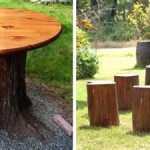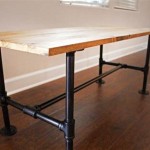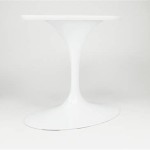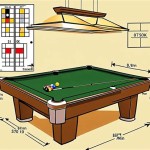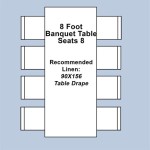The Regulation Size For A Pool Table
The regulation size for a pool table is a crucial aspect of the game, influencing gameplay, skill development, and the overall playing experience. Understanding the standardized dimensions is essential for both casual players and serious competitors. These dimensions are established by governing bodies and are specifically designed to ensure fair play and consistent conditions across different venues.
Pool, or pocket billiards, is a game of skill and strategy played on a rectangular table with six pockets – one at each corner and one in the middle of each long side. The object of the game is to use a cue stick to strike a cue ball, which then strikes other balls (object balls) and causes them to fall into the pockets. The dimensions of the table, particularly the playing surface and the height, directly impact the difficulty of the game, the angles involved in shots, and the overall flow of the match.
The establishment of regulation sizes aims to create a level playing field for players of all levels. These standards ensure consistency in table dimensions, ball size, and other equipment specifications, which is particularly important in professional tournaments and competitive leagues. Deviation from these standards can significantly alter the dynamics of the game, potentially favoring players accustomed to non-regulation tables.
Regulation Table Sizes
The term "regulation size" encompasses several dimensions of a pool table. The most significant are the length and width of the playing surface. While different sizes exist, the most common regulation size, particularly for tournament play, is a 9-foot table. However, 8-foot and 7-foot tables are also frequently used, especially in homes and smaller venues.
A 9-foot pool table has a playing surface that measures 50 inches in width and 100 inches in length. This translates to a ratio of 1:2, a standard proportion maintained in most pool tables regardless of their overall size. The dimensions refer to the area within the cushions, not the exterior dimensions of the table itself. The overall exterior dimensions of a 9-foot table can vary depending on the thickness of the frame and the width of the rails.
An 8-foot pool table, sometimes called an "oversized" 8-foot, typically measures 44 inches in width and 88 inches in length within the cushions. This size is a popular choice for home use as it offers a good balance between playability and space requirements. While smaller than the 9-foot regulation size, it still provides a substantial playing area for practicing and playing various pool games.
A 7-foot pool table, the smallest of the commonly used sizes, measures 39 inches in width and 78 inches in length within the cushions. This size is often found in bars, recreation rooms, and locations where space is limited. While the smaller size necessitates adjustments in strategy and shot selection, it still provides an enjoyable playing experience and is suitable for beginners and casual players.
It's important to note that these dimensions are considered standard; however, slight variations might exist due to manufacturing tolerances or specific design features of different table brands. The recognized governing bodies of billiards, such as the World Pool-Billiard Association (WPA), set guidelines for acceptable tolerances to ensure fair play in professional events. These tolerances are generally small, typically within a fraction of an inch, to maintain consistent playing conditions.
Importance of Regulation Height and Levelness
Beyond the length and width of the playing surface, the height of the pool table is another critical dimension that influences gameplay. Regulation height, measured from the floor to the top of the playing surface, is typically between 29 1/4 inches and 31 inches. This height is designed to provide comfortable access for players of average height, allowing them to maintain proper stance and cueing technique.
Maintaining the correct height ensures that players can stand comfortably and have a clear view of the table. Too low, and players may have to stoop excessively, affecting their back and posture. Too high, and players may struggle to get a clear line of sight and maintain a stable stance. The regulation height range provides a standardized ergonomic setting for players to perform at their best.
Equally important is the levelness of the playing surface. A perfectly level table is essential for accurate ball roll and predictable game play. Even slight unevenness can significantly impact the trajectory of the balls, causing them to deviate from their intended path. Consequently, professional installers use precision leveling tools to ensure that the playing surface is perfectly horizontal in all directions.
Leveling a pool table is a meticulous process that typically involves adjusting the feet or shims underneath the table frame until a level surface is achieved. Factors such as the type of flooring, the stability of the building, and even changes in temperature and humidity can affect the levelness of the table over time. Regular maintenance, including re-leveling as needed, is crucial for preserving the integrity of the playing surface and ensuring a fair and consistent game.
Materials and Construction Influencing Playability
The materials used in constructing a pool table, particularly the playing surface and cushions, play a significant role in determining the quality of play. The playing surface, typically made of slate, must be perfectly flat and smooth to provide a consistent and predictable ball roll. The thickness of the slate also affects the table's stability and resistance to warping or sagging over time.
Slate is the preferred material for professional-grade pool tables due to its inherent flatness, density, and durability. The slate is typically covered with billiard cloth, a tightly woven wool or wool-nylon blend that provides a smooth, low-friction surface for the balls to roll on. The quality of the billiard cloth also affects the ball speed and spin, influencing the overall playing characteristics of the table.
The cushions, also known as rails, are the resilient barriers surrounding the playing surface that the balls rebound off. The quality and composition of the cushions directly impact the accuracy and predictability of bank shots. High-quality cushions are made of gum rubber or synthetic rubber compounds that provide consistent rebound characteristics and maintain their shape over time.
The angle of the cushions, known as the "nose height," is carefully calibrated to ensure that the balls rebound at predictable angles. This angle is critical for executing bank shots accurately and strategically. Worn or damaged cushions can compromise the rebound characteristics, leading to inconsistent and unpredictable rebounds, which can significantly impact the game.
The frame of the pool table provides the structural support for the slate and cushions. A sturdy and well-constructed frame is essential for maintaining the table's levelness and stability. The frame is typically made of wood, metal, or a combination of both. Higher-quality tables often feature solid wood frames that provide superior stability and resistance to warping.
The pockets, or openings where the balls are sunk, also contribute to the overall playing experience. The size and shape of the pockets are regulated to ensure a fair challenge for players. Pockets that are too large may make the game too easy, while pockets that are too small may make it overly difficult. The regulation dimensions for pockets are carefully specified to provide a balance between challenge and playability.
In summary, the regulation size of a pool table encompasses a range of dimensions, including the length and width of the playing surface, the height of the table, and the dimensions of the pockets. These standardized dimensions, along with the materials used in construction and the levelness of the playing surface, all contribute to the overall playing experience and ensure fair and consistent gameplay.

The Official Size Of A Pool Table Canadian Home Leisure

Pool Table Room Size Guide Chart Birkbeck Billiards

How Tall Is A Standard Pool Table Height Guide Bar 101

Standard Size Of A Pool Table

Correct Pool Table Dimensions To Leave Enough Room For Playing Billiard

What Size Billiard Table Is Considered Regulation West Penn Billiards

Pool Table Room Size Guide Chart Birkbeck Billiards

Find The Perfect Pool Table Dimensions For Your Game Room

Room Size Pooltables Com

There Is No Regulation Size Pool Table People


